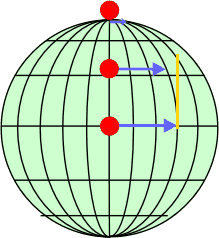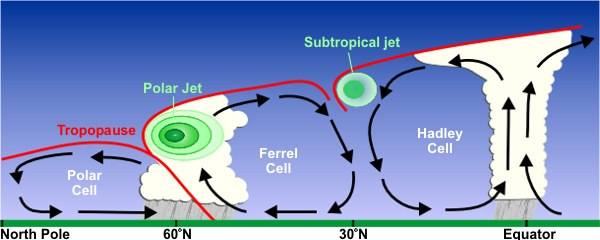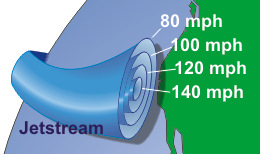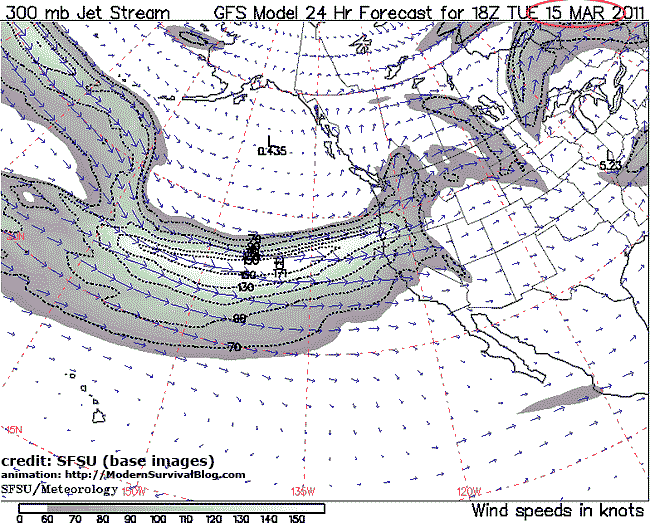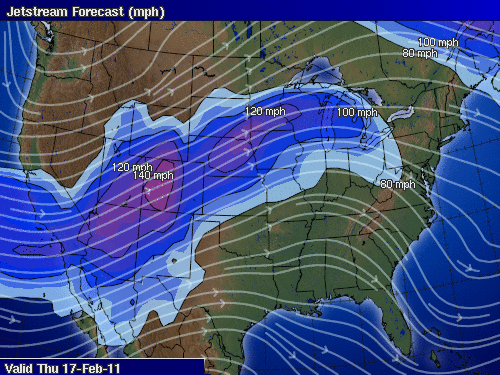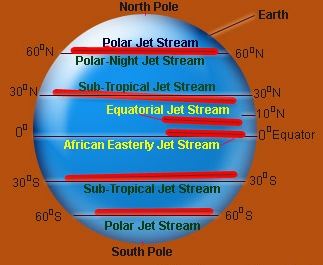
|
||||||||||||
|
|
The Jet Stream
Jet streams are relatively narrow bands of strong wind in the upper levels of the atmosphere. The winds blows from west to east in jet streams but the flow often shifts to the north and south. Jet streams follow the boundaries between hot and cold air. Since these hot and cold air boundaries are most pronounced in winter, jet streams are the strongest for both the northern and southern hemisphere winters.
The actual appearance of jet streams result from the complex interaction between many variables - such as the location of high and low pressure systems, warm and cold air, and seasonal changes. They meander around the globe, dipping and rising in altitude/latitude, splitting at times and forming eddies, and even disappearing altogether to appear somewhere else.
Jet streams also "follow the sun" in that as the sun's elevation increases each day in the spring, the jet streams shifts north moving into Canada by Summer. As Autumn approaches and the sun's elevation decreases, the jet stream moves south into the United States helping to bring cooler air to the country.
Also, the jet stream is often indicated by a line on maps and by television meteorologist. The line generally points to the location of the strongest wind. Jet streams are typically wider and not as distinct but a region where the wind increase toward a core of strongest wind.
One way of visualizing this is consider a river. The river's current is generally the strongest in the center with decreasing strength as one approaches the river's bank. It can be said that jet streams are "rivers of air".
The Polar Jet Streams: These Jet Streams are located 50°-60° North/South of the equator and at 35,000 Feet (About 6.6 Miles), is a powerful, current of wind that acts as a boundary line, separating the extremely cold polar air (North) from the warm sub-tropical air (South). The Speed of the Polar Jet Stream varies depending on the time of the year. When it is winter in the Northern hemisphere it can reach up to 300 miles an hour but it has been measured at a speed of 400 miles an hour in southwest Scotland. The Subtropical Jet Stream: These strong jet streams are located at about 30° North/South of the equator at a height of about 41,000 feet (About 8.1 Miles) and along with the Polar Jet Stream is responsible for many types of weather patterns, depending on the time of the year. The Equatorial Jet Stream: The equatorial Jet Stream is located 7° to 10° North of the Equator at an altitude of 50,000 Feet (About 9.5 Miles). This stream only travels from Asia to Africa and is the strongest during the summer months of July and August. This Stream travels in an easterly direction and is formed when there is a great temperature change with the coldest air nearest the equator. The African Easterly Jet Stream: The African Easterly Jet Stream forms at an altitude of 12,000 to 15,000 Feet and is sometimes present during the summer months of July and August. This jet stream is located right under the Equatorial Jet Stream at (About 2.2 to 2.9 Miles) high. The Polar-Night Jet Stream: This jet stream is only active during the winter months of the Northern Hemisphere and is located at 60° North only, at a height of about 80,000 feet (About 15.2 Miles). Credit:NOAA |
